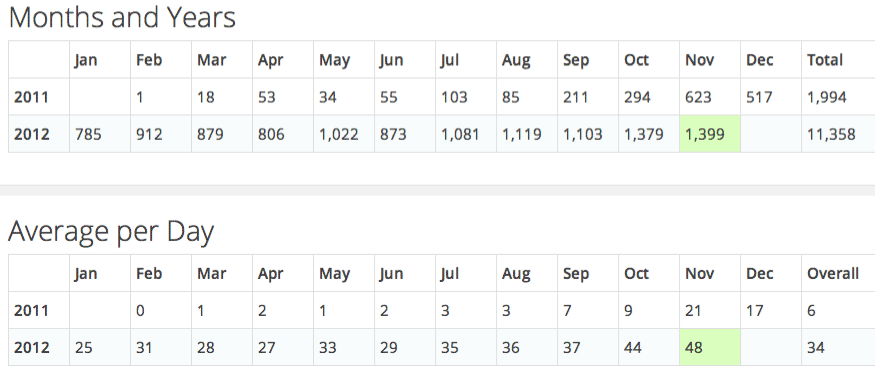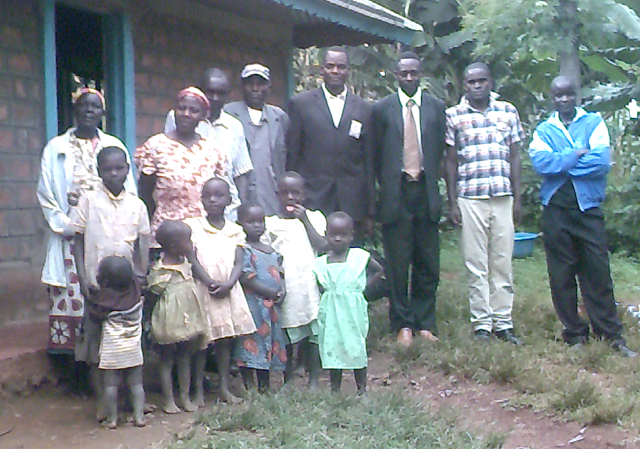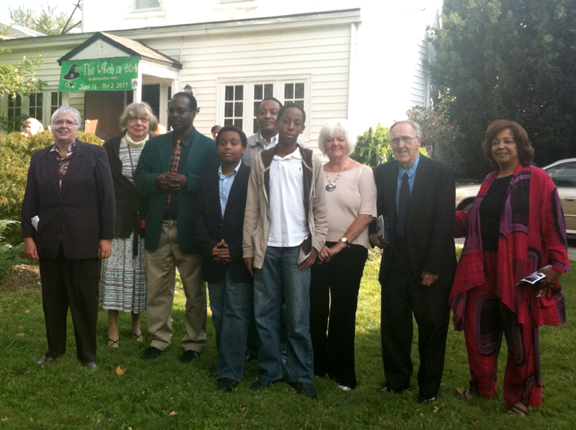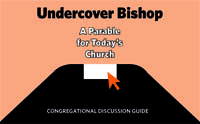 Small Church Faces Demographic Change
Small Church Faces Demographic Change
Three Redeemer Ambassadors set out on a new adventure this Sunday morning. We hadn’t been in this area for a year or so. We never plan our trips before the prior Saturday afternoon, so it’s always a surprise to us.
Immanuel Lutheran Church, Norwood, Delaware County is celebrating 125 years. We told them they are just a bit older than we. We are in our 122nd year.
Redeemer is not closed. We are locked out of God’s house by SEPA Synod.
We read their Trend statistics and website thoroughly before our visit. This was very interesting to us. It is one of the many enigmas we encounter on our visits.
Redeemer was falsely represented to the Synod Assembly and in court as having only 13 members (they counted only our white members). Our situation in the courts, without any opportunity for us to witness otherwise, has been repeatedly termed “dire.” We were not operating with a deficit budget. Synod was!
Our true statistics laid beside Immanuel’s make us look rich indeed. We had an endowment three times theirs in 2009 and more than 15 times theirs in 1997. Legal fees dealing with the Synod in 1997 and 2008-2013 ate up a lot of our resources. The Synod has cost our community dearly and they aren’t finished with us yet, we suspect.
Immanuel’s membership and attendance are dropping at the same rate as most other churches. In contrast, Redeemer was growing. We accepted 52 members in the 18 months prior to Bishop Burkat’s interest in our assets. They didn’t count. “White Redeemer must be allowed to die. Black Redeemer . . . we can put them anywhere,” said Bishop Burkat to our stunned East African members—some of whom had been members for a decade. Some were born and baptized into our faith community. As one young lady commented at the time, “This synod is great on supporting Tanzanian ministry as long as we Tanzanians stay in Tanzania.”
A difference is that Immanuel has a pastor. SEPA strategy in dealing with Redeemer was to isolate us from the standard relationship of church/synod. Bishop Burkat chased two of our pastors. Bishop Almquist chased one and refused to help us find a replacement for six years.
In 2008, we had just presented a resolution to the bishop to call the pastor we had been working with successfully for seven months. After months of trying to reach the bishop to ask for an assignment without so much as a returned call, he suddenly was given an interim job in the northern frontier of the Synod. Redeemer continued to find our own leaders. One of them was with us this morning.
This was our Ambassador’s 70th visit. It amazes us that more than a third of the churches we visit are no stronger than we, but they still felt comfortable voting to take our property.
They are in the same boat. We’ll hand them an oar! We’ve been down the rapids that they are about to take!
We are very familiar with the challenges they face.
- Astronomical utility bills. Immanuel is already soliciting contributions for an anticipated $10,000 winter heating bill. Ours was $8000 when we used the building daily and about $6000 when we heated the building only a couple of times a week.
- Enormous insurance bills. These bills are crippling a lot of small churches— the price we pay for living in a litigious society (including church culture).
- Changing demographics. We actually solved this problem!
They have a two-story educational building with a gym. We had one without the gym. It was a good source of ongoing revenue for us until SEPA Synod interfered. Redeemer was very much self-supporting.
I asked why they weren’t hosting a school. It seemed to be an obvious solution to their financial problems. The building, a member shared, isn’t handicapped accessible and they couldn’t open a school without that. They said it was just too costly to make it accessible.
If this is the only thing keeping a church from worthwhile programs that would contribute to their mission and ministry, one might think that all churches, through their hierarchical interdependence, would find a way to help older congregations solve this problem. Instead, our leaders wait for their older neighborhood churches to die so they can benefit from the spoils. They discourage the use of equity to solve problems. They offer no solutions. This relieves every church’s burden of supporting hierarchy and gives them a false sense of strength and prosperity. They sit smugly in their buildings, like spiders in their webs, waiting to assume the resources of older churches. Their buildings are up to code only because they were built more recently.
Redeemer’s school, by the way, was handicapped accessible. We were trying to renovate it to bring other things up to date, but the biggest expense in making it accessible had already been met. This is a resource to our church and community that has been squandered by SEPA.
Immanuel had just finished a week of Bible School and remnants of the busy week were still adorning the walls. About 45 children attended, the pastor said.
Yet, there were no children in church. There’s a challenge for them.
Redeemer, on the other hand, often had more children than adults in church. Many of our new members learned of our church through our six-week summer programs and day school.
The people were quite friendly. Many approached us for conversation. Even the pastor, The Rev. Gerald Faust, talked to us a little. (This is unusual!).
There were about 50 in church. They seemed to like to keep to a schedule. The organist announced that they would truncate the opening hymn, because the announcements were longer than usual.
Their Education Chair gave a talk about their various education opportunities which seemed to be extensive. They are preparing for their Fall Rally Day. We hope they can get some of those VBS families interested.
One of our Ambassadors was happy that they used the hymnal (LBW and WOV) and not the bulletin for worship. It’s his pet peeve. The hymns were all familiar. One was our Vacation Bible School hymn years ago and I still know it by heart. (Each year we memorized a different standard hymn.)
Singing was strong. A seven-member choir sang an offertory.
They sang the Lord’s Prayer at the appropriate time. It’s not the first time in our visits that the Lord’s Prayer was sung, but we have encountered a church where the pastor refused to allow the singing of the Lord’s Prayer during worship! Redeemer did this on special occasions. Maybe that’s what bugged the bishop! 😉
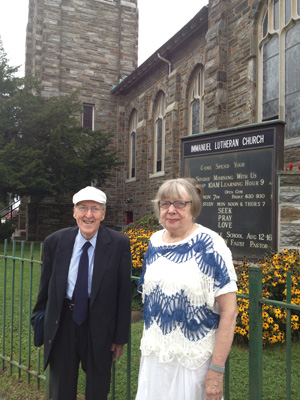 The sermon was about division in the church in keeping with today’s lectionary. Sometimes we think the point of this passage gets lost. Division is to be expected. We are not asked by Jesus to lie down and let adversaries walk over us. Instead, we are encouraged to be prepared. Redeemer was prepared!
The sermon was about division in the church in keeping with today’s lectionary. Sometimes we think the point of this passage gets lost. Division is to be expected. We are not asked by Jesus to lie down and let adversaries walk over us. Instead, we are encouraged to be prepared. Redeemer was prepared!
The most amazing thing about the sanctuary was not noticeable until we turned around to leave. There is a beautiful mural on the rear wall, painted by a woman and member, now deceased (see above). Their own Violet Oakley! (She painted murals on the walls of the Harrisburg state capitol and on church walls in our neighborhood.) Small churches are filled with talented and passionate people.
One of our Ambassadors is an architecture buff and commented on the older Sunday School area, now a fellowship area, at the rear of the church. This was common church architecture in the 1920s and was part of the Sunday School movement. Classes would meet in partitioned sections around the perimeter and the partitions would open for a closing ceremony. It’s a good concept, but the numbers in Sunday School rarely support it any more.
We wish this good-spirited congregation the very best as they celebrate their 125 years in September. We encourage them to find a way to open a school, so they can concentrate more on mission and less on heating and insurance bills. There has to be a way!
As we left the pastor asked us to sign the guest book. We did. We assured him we are loyal Lutherans.


